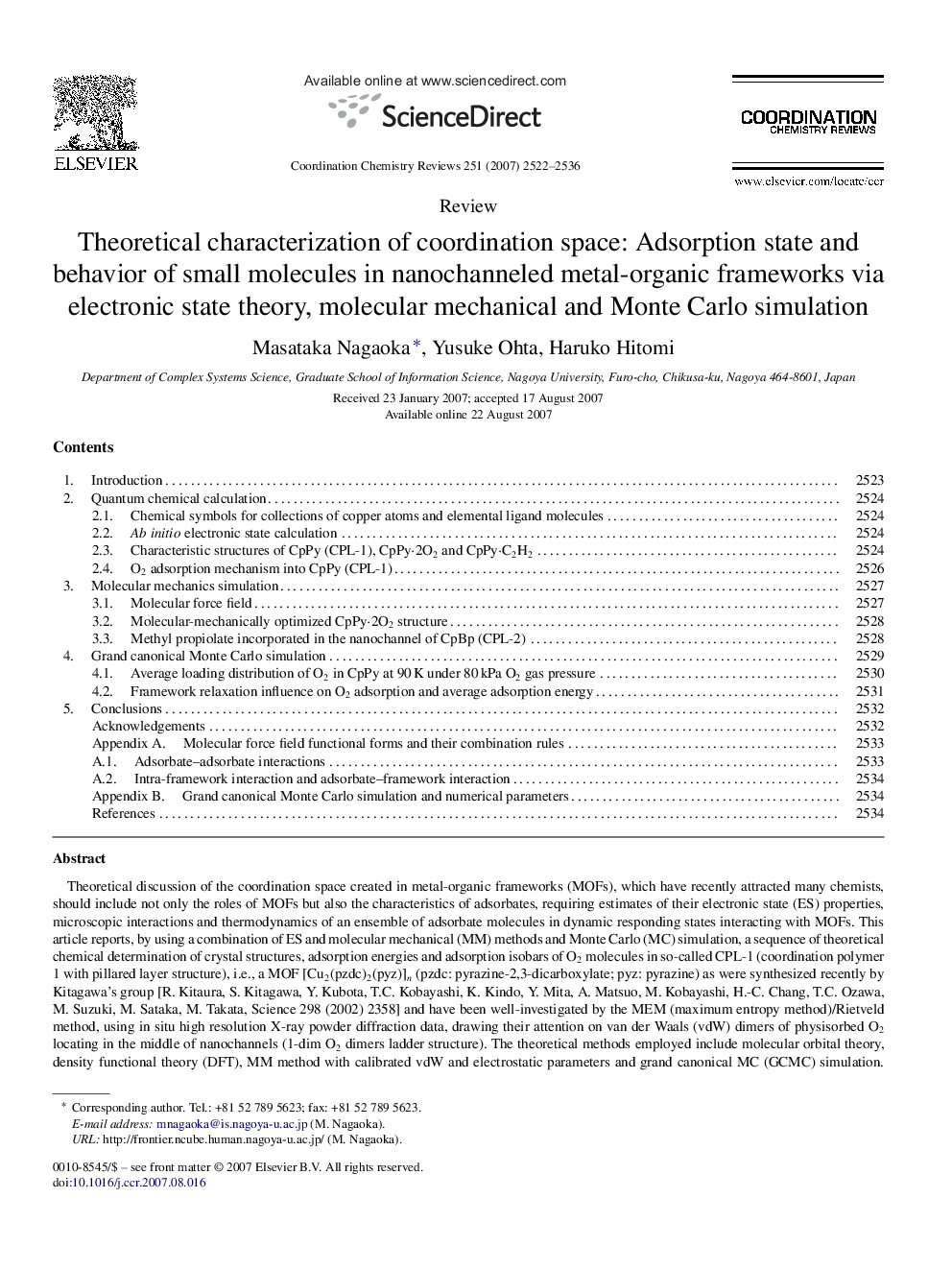| Article ID | Journal | Published Year | Pages | File Type |
|---|---|---|---|---|
| 1300461 | Coordination Chemistry Reviews | 2007 | 15 Pages |
Theoretical discussion of the coordination space created in metal-organic frameworks (MOFs), which have recently attracted many chemists, should include not only the roles of MOFs but also the characteristics of adsorbates, requiring estimates of their electronic state (ES) properties, microscopic interactions and thermodynamics of an ensemble of adsorbate molecules in dynamic responding states interacting with MOFs. This article reports, by using a combination of ES and molecular mechanical (MM) methods and Monte Carlo (MC) simulation, a sequence of theoretical chemical determination of crystal structures, adsorption energies and adsorption isobars of O2 molecules in so-called CPL-1 (coordination polymer 1 with pillared layer structure), i.e., a MOF [Cu2(pzdc)2(pyz)]n (pzdc: pyrazine-2,3-dicarboxylate; pyz: pyrazine) as were synthesized recently by Kitagawa's group [R. Kitaura, S. Kitagawa, Y. Kubota, T.C. Kobayashi, K. Kindo, Y. Mita, A. Matsuo, M. Kobayashi, H.-C. Chang, T.C. Ozawa, M. Suzuki, M. Sataka, M. Takata, Science 298 (2002) 2358] and have been well-investigated by the MEM (maximum entropy method)/Rietveld method, using in situ high resolution X-ray powder diffraction data, drawing their attention on van der Waals (vdW) dimers of physisorbed O2 locating in the middle of nanochannels (1-dim O2 dimers ladder structure). The theoretical methods employed include molecular orbital theory, density functional theory (DFT), MM method with calibrated vdW and electrostatic parameters and grand canonical MC (GCMC) simulation. In the DFT method, the pyrazine ring is found tilting in coinciding with O2 adsorption and its binding energy is −10.92 kcal/mol, being in reasonable agreement with the adsorption energy at 0 K, −4.12 kcal/mol, extrapolated linearly from the calculated adsorption isobar curve by GCMC simulations, where the MM O2 potential parameters are calibrated according to recent ab initio ES calculations. Finally, from the MM structural optimization, it is clearly shown that introduction of quadrupole interaction makes inclination angles of O2 molecules dramatically in accord with the experiment results.
